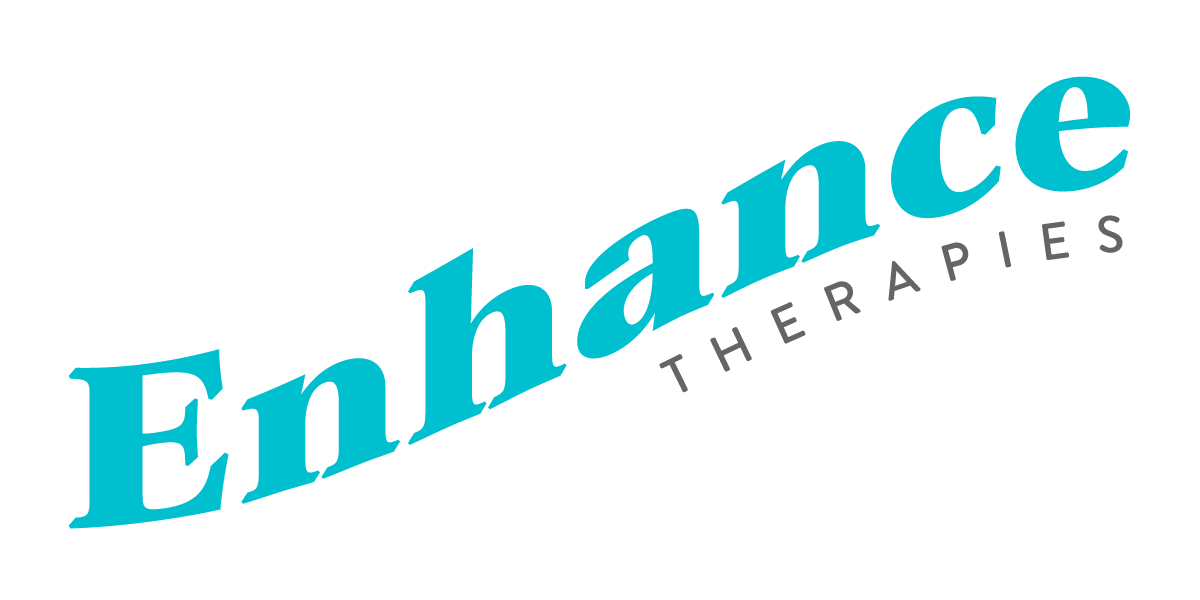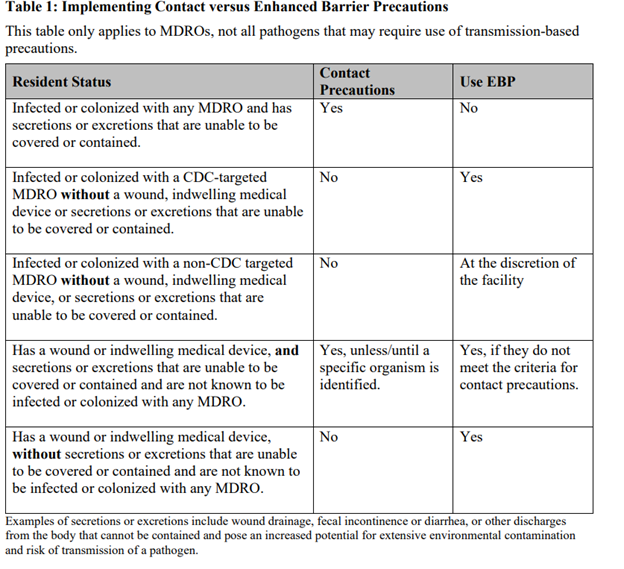
Medicare Update: EBP New Guidance
CMS is issuing new guidance for State Survey Agencies and long term care (LTC) facilities on the use of enhanced barrier precautions (EBP) to align with nationally accepted standards.
EBP recommendations now include use of EBP for residents with chronic wounds or indwelling medical devices during high-contact resident care activities regardless of their multidrug-resistant organism status.
The new guidance related to EBP is being incorporated into F880 Infection Prevention and Control.
Regulations and Guidance:
F880
§483.80 Infection Control
The facility must establish and maintain an infection prevention and control program designed to provide a safe, sanitary, and comfortable environment and to help prevent the development and transmission of communicable diseases and infections.
§483.80(a) Infection prevention and control program.
The facility must establish an infection prevention and control program (IPCP) that must include, at a minimum, the following elements:
§483.80(a)(1) A system for preventing, identifying, reporting, investigating, and controlling infections and communicable diseases for all residents, staff, volunteers, visitors, and other individuals providing services under a contractual arrangement based upon the facility assessment conducted according to §483.70(e) and following accepted national standards;
The recommendations now include the use of EBP during high-contact care activities for residents with chronic wounds or indwelling medical devices, regardless of their MDRO status, in addition to residents who have an infection or colonization with a CDC-targeted or other epidemiologically important MDRO when contact precautions do not apply.
This new guidance related to EBP is being incorporated in F880 Infection Prevention and Control to assist LTC surveyors when evaluating the use of enhanced barrier precautions in nursing homes. We note that facilities have some discretion when implementing EBP and balancing the need to maintain a homelike environment for residents.

For residents for whom EBP are indicated, EBP is employed when performing the following high-contract resident care activities:
- Dressing
- Bathing/showering
- Transferring
- Providing hygiene
- Changing linens
- Changing briefs or assisting with toileting
- Device care or use: central line, urinary catheter, feeding tube, tracheostomy/ventilator
- Wound care: any skin opening requiring a dressing
Note: In general, gowns and gloves would not be recommended when performing transfers in common areas such as dining or activity rooms, where contact is anticipated to be shorter in duration. Outside the resident’s room, EBP should be followed when performing transfers or assisting during bathing in a shared/common shower room and when working with residents in the therapy gym, specifically when anticipating close physical contact while assisting with transfers and mobility.
Residents are not restricted to their rooms or limited from participation in group activities. Because EBP do not impose the same activity and room placement restrictions as Contact Precautions, they are intended to be in place for the duration of a resident’s stay in the facility or until resolution of the wound or discontinuation of the indwelling medical device that placed them at higher risk.
Information regarding CDC-targeted MDROs and current recommendations on EBP are available on the CDC’s webpage, “Implementation of Personal Protective Equipment (PPE) Use in Nursing Homes to Prevent Spread of Multidrug-resistant Organisms (MDROs),” here.
Survey Procedures
Surveyors will evaluate the use of EBP when reviewing sampled residents for whom EBP are indicated and focus their evaluation of EBP use as it relates to CDC-targeted MDROs.
Recourses:
FAQs about Enhanced Barrier Precautions in Nursing Homes Enhanced-Barrier-Precautions-3.20.24.pdf
